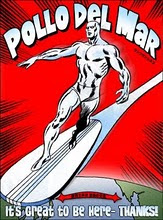.png) |
| Frederick Soddy (1877-1956) |
Soddy seems to have had two careers--first as an accomplished physical scientist (Chemistry Nobel in 1921) and then as a sort of social scientist, but more accurately as a social activist during the Great Depression. In this way he was a prototype Linus Pauling, who won both a Chemistry Nobel and a Peace Nobel for his activism.
Soddy was a chemist by training but today he'd be called a radiochemist. He must have seen or heard firsthand many of the key discoveries in nuclear physics in the late 19th and early 20th century, first at Oxford and then as graduate student with Lord Rayleigh. Afterwards, Soddy moved to Canada around the same time Ernest Rutherford did and the two joined forces. Together they discovered the natural transmutation of elements. Soddy's Nobel Prize citation reads:
for his contributions to our knowledge of the chemistry of radioactive substances and his investigations into the origin and nature of isotopes.His isotope work came later.
Recall that Count Rumford first paid attention to the heat given off boring cannon and thereby converted our notions of energy. Like Rumford, Soddy first realized how much heat and energy radioactive decay gave off--orders of magnitude more energy than burning fossil fuels did and it was also seemingly inexhaustible. Soddy was so prescient regarding how much energy was locked inside uranium, radium, and thorium that he warned Britain's government about the dangers of "atomic" bombs during the First World War.
The notion of cheap and abundant atomic energy crested in 1954 with Lewis Strauss' famous too cheap to meter statement, though it appears that he was referring to hypothetical hydrogen fusion reactors.
Soddy died in 1956 in relative obscurity. This (from the Wiki bio) is intriguing:
In four books written from 1921 to 1934, Soddy carried on a 'quixotic campaign for a radical restructuring of global monetary relationships', offering a perspective on economics rooted in physics—the laws of thermodynamics, in particular—and was 'roundly dismissed as a crank'. While most of his proposals - 'to abandon the gold standard, let international exchange rates float, use federal surpluses and deficits as macroeconomic policy tools that could counter cyclical trends, and establish bureaus of economic statistics (including a consumer price index) in order to facilitate this effort' - are now conventional practice, his critique of fractional-reserve banking still 'remains outside the bounds of conventional wisdom'. Soddy wrote that financial debts grew exponentially at compound interest but the real economy was based on exhaustible stocks of fossil fuels. Energy obtained from the fossil fuels could not be used again. This criticism of economic growth is echoed by his intellectual heirs in the now emergent field of ecological economics.








